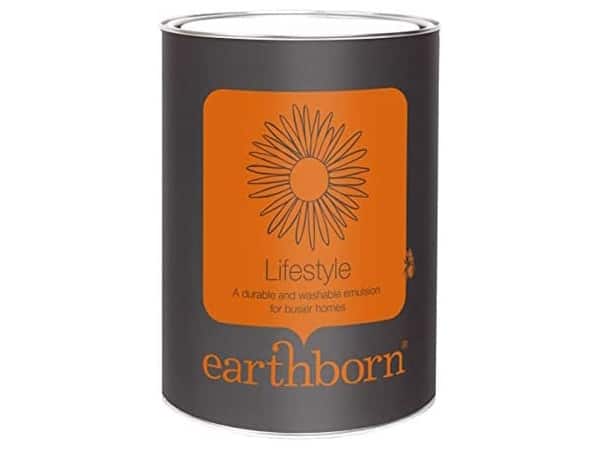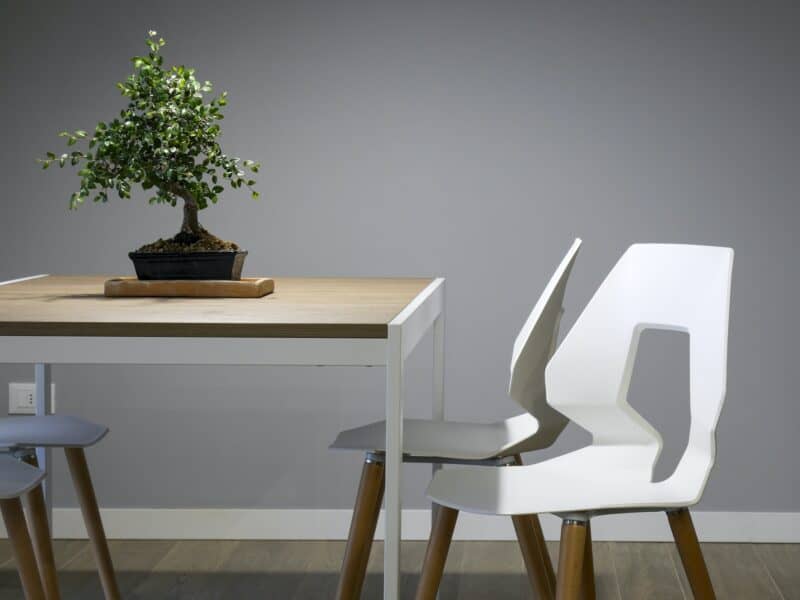Parents who may be concerned about the harmful ingredients used in traditional paints will be pleased to know that there is now a kind of paint just for them. Child Safe Paints or Nursery Paints are being marketed as being especially safe to use for children’s rooms and nurseries – with no harmful fumes or toxic ingredients.
What’s the Difference from Ordinary Paint?
You may be wondering what the difference is between these new paints and ordinary emulsion paint you might find in B&Q?
The main difference really is that these paints have been certified to British Standard BS EN 71-3:1995 – which sets out strict standards for ingredients used in coatings and lacquers used on toys.
It isn’t a standard that specifically relates to decorating materials – just that if such a paint was to be used for painting toys it must meet these safety standards.
What’s the ‘Toy Safety’ Standard?
DTI Product Standards – Toy Safety – Guidance Notes on the UK Toys (Safety) Regulations 1995
Annex C: Essential safety requirements for toys: 3:2 Chemical Properties
In particular, for the protection of children’s health, bioavailability resulting from the use of toys must not, as an objective, exceed the following levels per day:
0,2 µg for antimony
0,1 µg for arsenic
25,0 µg for barium
0,6 µg for cadmium
0,3 µg for chromium
0,7 µg for lead
0,5 µg for mercury
5,0 µg for selenium
*Bioavailability is a measure of the rate and amount of material absorbed into the body’s circulation. * µg is a unit of mass equal to one millionth (1/1,000,000) of a gram or 1/1000 of a milligram
Put simply, any paint which passes this standard must contain levels of the ingredients above so small as to be almost negligible.
However, if a paint has not been subjected to this standard of assessment then it isn’t possible to say whether it would pass or, if it wouldn’t, by how much?
In effect, these paint companies are using it to differentiate their paints from their competitors. Which is all well and good but it doesn’t necessarily mean that a paint without the same certification isn’t as good – just that it hasn’t been tested to the same standard.
And if you’re producing paint that’s intended purely for decorating walls and ceilings there is absolutely no obligation to subject it to this test?
So what else do you need to take into account when choosing paint for your kid’s room?
Nasty Fumes & VOCs
In my experience parents tend to be more concerned about the fumes in paints rather whether or not they contain toxic metals. Volatile Organic Compounds (VOC’s) in paints are something we all need to be concerned about.
All paints are now subject to legislation which limits the amount of VOC’s used in their manufacture but some paints, like oil based gloss and satin finishes, still have relatively high amounts – which you might want to avoid.
The good news is that there are now plenty of water based alternatives which contain far less obnoxious chemicals. Some organic or ‘eco’ paints contain none at all!
The Best Child Safe Paints
Ideally a ‘child safe’ paint will be one that has passed the toy paint standards – and- have low or zero amounts of volatile organic compounds.
This is an area of consumerism where the US and Canada are years ahead of us with a vast choice of zero VOC paints to choose from – for both commercial and domestic use.
In the UK we have less choice but that’s better than none at all.

Suitable for all interior walls and ceilings, as well as interior woodwork, available in a range of modern and traditional colours
johnlewis.com
The ‘Intelligent’ range from The Little Greene Paint Company is a revolutionary alternative to traditional domestic paint finishes. Their Intelligent Matt and Intelligent Eggshell are environmentally friendly, washable and certified ‘toy-safe’.
*Little Green also produces a gloss paint which is suitable for use indoors and out. This finish is, however, not certified toy safe and should not be used as such.

amazon.co.uk
Comments, Questions & Concerns about Child Safe Paints
Hi, I have painted my daughters bed with a high VOC gloss and now realise I need a non-toxic paint instead. Can I just paint over the high VOC gloss with a low/zero VOC furniture paint? READ MORE…
The release of harmful fumes occurs mostly during the painting and drying process. Therefore, so long as the room is well ventilated and you leave sufficient time between painting the bed and and its eventual use, the long term effects are minimal.
If you want to be absolutely safe though, you can indeed paint again with a low/zero VOC paint and this will have the effect of sealing-in the previous finish.
We recently used a high voc gloss in our home & are expecting a baby, we now realise we should have chosen a safer paint, is there anything we can do? READ MORE…
Lots of ventilation is the answer.
I should point out though that most regular paints you can buy in the UK are well within the regulated ‘safe’ limits for VOC content. High gloss has a higher limit than most because it’s more likely to be used on skirtings and door frames that don’t have a large surface area.
As I say above the amounts are relatively high, when compared to 0% of very near 0% alternatives, but they are still a lot lower than was the case 10 years ago.
The only exceptions are some industrial paints and very specialist primers that you wouldn’t be using in the home anyway.
Very low or zero VOC paints are the ideal but ordinary paint isn’t that bad. I hope this reassures you?
I have recently done the same as above. How long are the voc’s we have had every window open for a week now are we safe now or are the vocs still dangerously high? READ MORE…
The greatest hazard from VOC’s is when actually doing the painting and for a few days afterwards. The levels continue to decrease each day. It’s not possible to give an exact time scale but the longer the room is ventilated the better.
Also bear in mind the cumulative effects of new carpets, curtains, wallpaper, cleaning products, etc. Ideally, you should ensure all this is done as far in advance of the baby’s arrival as is practically possible.
I was wondering if you could advise me. I have just been renovating a dolls house for my 3 year old and have used an ordinary satin wood paint for the outside of it… READ MORE…
I was wondering if you could advise me. I have just been renovating a dolls house for my 3 year old and have used an ordinary satin wood paint for the outside of it. I am having regrets now and thinking that I should have used a non-toxic paint instead. Would it be child safe to put the non-toxic paint on top or would I have to completely remove the toxic paint and then paint with the non-toxic paint?
If a paint isn’t labelled as non-toxic it doesn’t necessarily follow that it IS toxic and dangerous. It just means that paint hasn’t been subjected to the test, and, in the case of ordinary satin wood paint, there is absolutely no reason why it should be.
Ideally, because a doll’s house is technically a toy, you should have used a paint that has been tested and certified as ‘child safe’ but since this is a one off project I wouldn’t worry too much about it.
Finally, in respect of toys and ‘safe’ paints the hazard is that the child will chew the toy and ingest small quantities of paint. This is much less likely with a doll’s house but, if you wanted to be absolutely certain, yes – you would need to remove the previous coating.
I’m about to paint a cot with one of these products but I’m wondering if they require a top coat for long term durability? The cot turns into a bed so I am thinking about 4 years or so. READ MORE…
As a general rule, the more coats you apply the more durable the finish. So, yes, an extra coat will help.
I need a paint child safe for painting Rocking Horses which I make in Wood – previously supplier no longer in business… READ MORE…
Rust-Oleum Furniture Paint complies with the regulations for paints used on toys and is widely available from amazon and DIY stores.
Is there a way to check a manufacturer’s claims for its paint please? One company is claiming that all 40 of its colours conform to EN71:3… READ MORE…
Is there a way to check a manufacturer’s claims for its paint please? One company is claiming that all 40 of its colours conform to EN71:3.
This is a relatively small company that has only been in existence for 2 years and the investment of certifying all its product would have been very large indeed.
I have asked the company and several of its stockists if they have certification or documentation to back up their claim.
To date no one has ever got back to me, leading me to surmise that it may be a false claim. Also do companies have legal obligation to provide a material safety data sheet if requested? Tina
I suspect you know more about this subject than I do but one explanation may be that the company are simply re-selling another company’s products with their own label – which is quite common.
However, if you have doubts about compliance with EU standards the British Standards Institute (BSI) should be able to advise you further.
http://www.bsigroup.com/en-GB/
0345 080 9000
Suppliers of substances with a potential to harm health do indeed need to provide safety data sheets. It’s not something within my expertise but, as far as I know, these matters now fall under a protocol known as ‘REACH’ (Registration, Evaluation, Authorisation and restriction of Chemicals).
You can find out more via the HSE website: http://www.hse.gov.uk/reach/whatisreach.htm
If you suspect a breach the HSE would be the people to speak to about this.
Very useful information thank you!
You’re welcome!
Brilliant – many thanks. Very informative.
Thanks
Some very reassuring advice given here , thank you, well worth a read!
Thanks
If you are worried about using paint products in your nursery or children’s rooms, or want to add a comment, please get in touch here…


